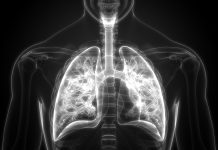The increase in alcohol deaths in England since the pandemic in 2020 is an ‘acute crisis’ and requires urgent intervention from the government
New research from the University of Sheffield and UCL revealed that alcohol death rates increased by a fifth in 2020, rising by a further 13.5% between 2020 and 2022.
The researchers, whose findings are published in Lancet Public Health, used data from the Office for National Statistics (ONS) on alcohol-related deaths in England.
Alcohol deaths shed light on health inequalities
The researchers found significant increases in alcohol deaths in groups most likely to be affected before the pandemic – men, people from deprived areas, and those aged 50 to 69. The leading cause was a steep rise in liver damage caused by alcohol. Deaths from acute causes such as alcohol poisoning also increased.
The latest ONS figures from 2023, though not analysed by the new study, show alcohol deaths continuing to rise in England, up to 8,274*.
Senior author Professor Colin Angus, from the University of Sheffield’s School of Medicine and Population Health, said: “The increase in alcohol deaths is entrenching existing health inequalities, with significant absolute increases among men and people from deprived areas.
“Men, just as before the pandemic, are twice as likely to die because of alcohol compared to women, with almost three times as many additional alcohol-specific deaths in the most deprived areas compared to the least deprived.”
Lead author Dr Melissa Oldham, from the UCL Institute of Epidemiology and Health Care, said: “The sharp increase in alcohol deaths during the pandemic was no flash in the pan. The higher rate has persisted and is getting worse each year.
“It is an acute crisis, and urgent action is needed to prevent further avoidable deaths. This includes substantial investment in health services to detect and treat liver disease and policies to reduce alcohol consumption in the population as a whole, such as minimum unit pricing and advertising restrictions.”
The COVID-19 pandemic contributed to a significant rise in alcohol consumption
The researchers commented that the increase in liver disease deaths may be partly explained by an increase in drinking in heavier drinkers and by more frequent binge drinking. However, reduced access to health services during the pandemic and reduced treatment-seeking could have played a role.
Furthermore, increases in drinking seen during the pandemic and lockdowns appear to have not returned to pre-pandemic levels, which could also explain the continuing rise in alcohol deaths each year.
Obesity could also be a factor, as increased drinking during the pandemic lockdowns may have been accompanied by weight gain and a more sedentary lifestyle, and obesity increases the risk of an alcohol-related liver disease death. COVID-19 may also have had an impact, as having established cirrhosis (scarring of the liver) is linked to a two- to threefold risk of death from a COVID-19 infection, the researchers said.
Co-author Dr Gautam Mehta, of the UCL Division of Medicine, said: “There are marked inequities in the provision of liver care in England. The average age of death from liver disease is nine years lower in the most deprived parts of the country, compared to the least. Overall, rates of death following a hospital admission with liver cirrhosis are several times higher than comparable admissions for stroke or heart disease. New treatments and strategies for earlier detection are urgently needed.”
Unclear why increased alcohol consumption has persisted
The researchers are unsure why changes in alcohol consumption at the start of the pandemic persisted when most people returned to pre-pandemic routines. It may be because habits formed during lockdowns are challenging to break.
They suggested that, in England, it could be linked to the cost-of-living crisis, as well as worse mental health, with higher rates of severe psychological distress reported in England between 2020 and 2022.
The study used the ONS definition of alcohol deaths as those registered on the death certificate as having an underlying cause that is wholly attributable to alcohol. This excludes deaths caused partially by alcohol, such as alcohol-related cancers or road traffic accidents.
Dr Katherine Severi, Chief Executive of the Institute of Alcohol Studies, said: “It’s shocking to see that almost 4,000 more people died in England from alcohol than was expected since the pandemic, with the number continuing to rise.
“We’ve known for years now that changing drinking habits during lockdowns increased levels of alcohol harm – this study underlines the impact that had on worsening health inequalities across England.
“The government has made tackling inequalities one of its health priorities. There is no way of doing that without introducing a comprehensive alcohol strategy that tackles cheap, excessively available, and aggressively marketed alcohol.”








